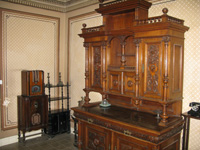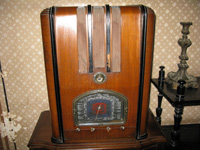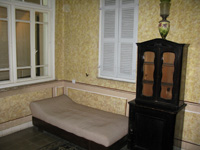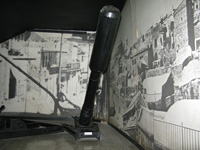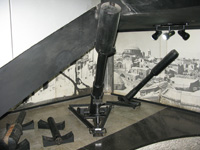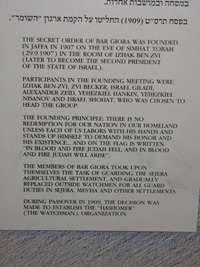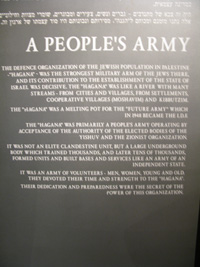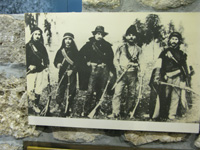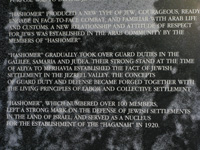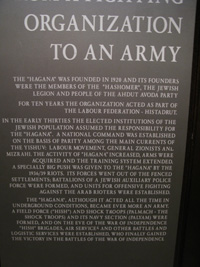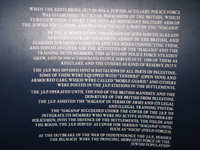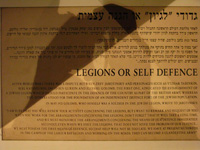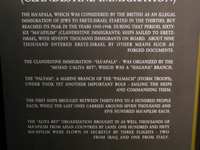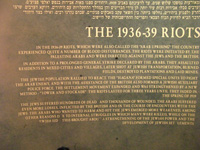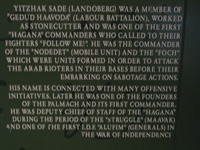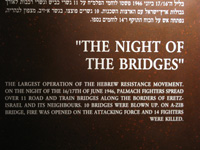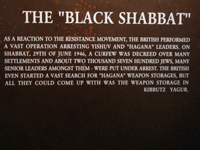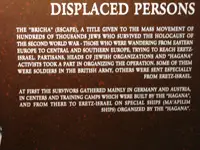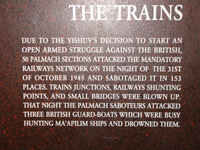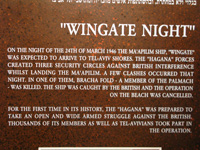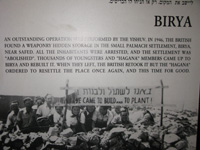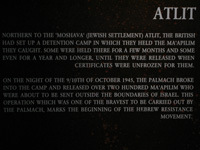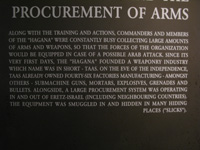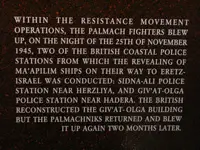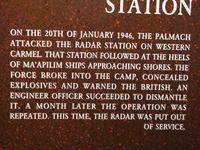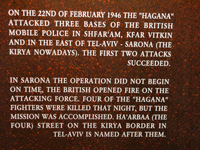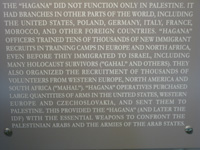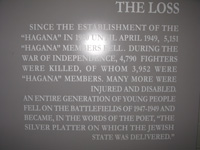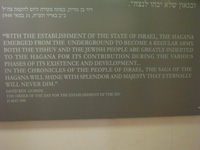Museums in Israel: The Haganah Museum
The Haganah Museum, located on Rothschild Blvd in a Tel Aviv house built in 1923, features exhibits depicting the story of the establishment of the Jewish Yishuv during the British Mandate and the story of the Haganah that defended the Jewish Yishuv.
Click here for pictures of the Haganah Museum taken by Dr Mitchell Bard.
The Golomb House
The Haganah Museum was built around the home of Eliyahu Golomb - the founder, and de facto commander of the Haganah. In 1930-1945, the Haganah';s secret headquarters was located in his house. On this site, many fateful decisions were made regarding the Jewish Yishuv's existence in pre-state Israel, mostly on issues of defense, security, settlement and illegal immigration.
In 1954, the house was sold to an entrepreneur who planned to demolish it and erect a new building in its place. But former members of the Haganah, who had served under Golomb, insisted that the house be turned into a museum to preserve the memory of the organization.
Golomb's residential room and office on the ground floor as well as the exterior of the house were preserved in full. Around them were built three floors of exhibits depicting the story of the establishment of the Jewish Yishuv during the British Mandate and the story of the Haganah that defended the Jewish Yishuv.
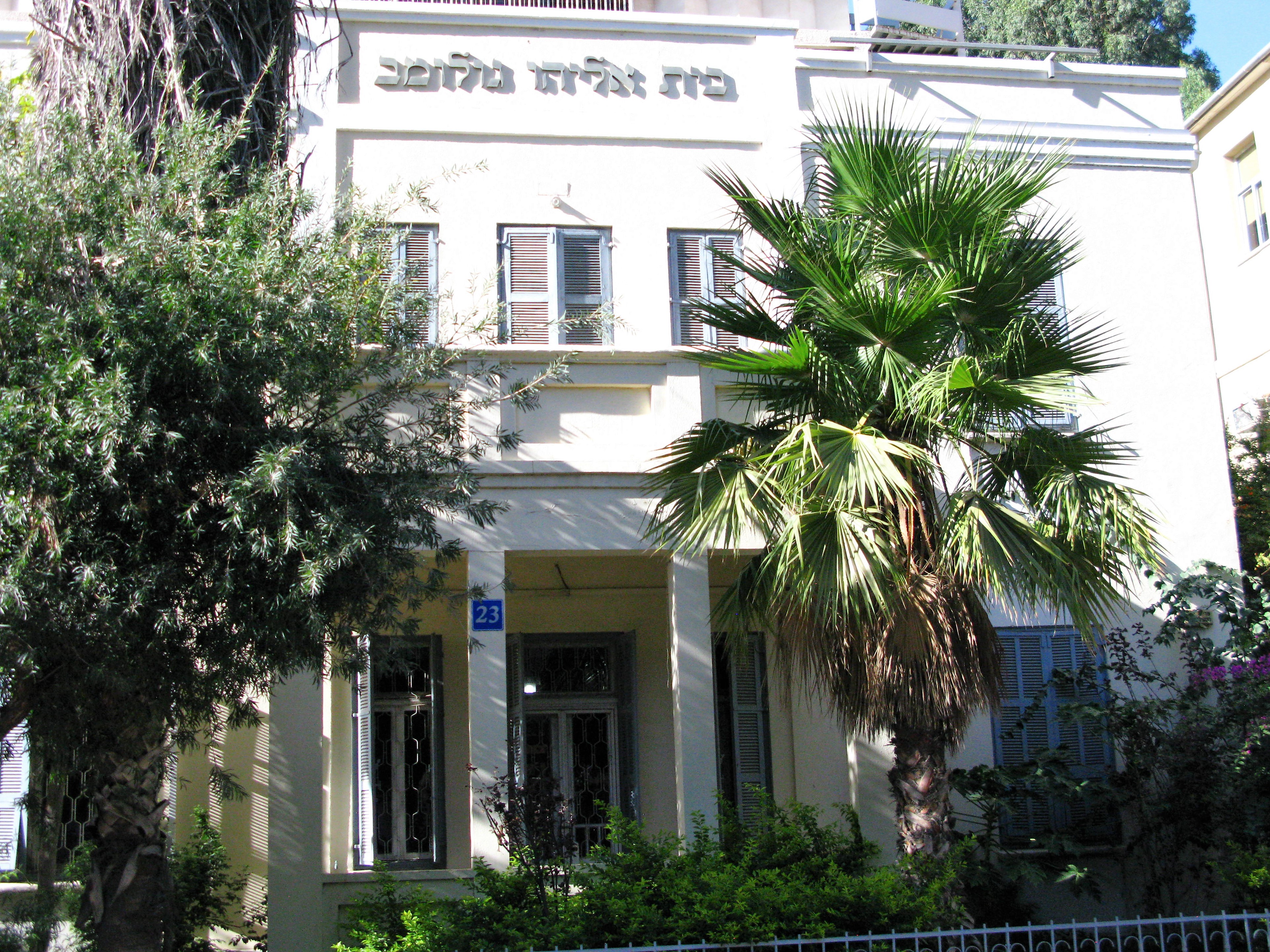 |
Level 1: 1907-1945
The first level features the history of the Jewish Yishuv and the Haganah from the establishment of the earliest defense organizations - Bar Giora (1907) and Hashomer (1909) - which turned self-defense into an integral part of the pioneer activity.
This floor also includes a depiction of the violent riots that broke out in response the British conquest of Palestine (the 1920-1921 riots) causing Eliyahu Golomb and Dov Hoz to initiate the Haganah organization - the 1929 riots which alerted the Jewish Yishuv to the need for an independent defense force; the 1936-1939 Arab revolt; the Special Night Squads commanded by Orde Wingate; the days of Tower and Stockade; the transition from the defensive to the offensive; the formation of the Jewish Settlement Police, and the Jewish mobile units.
This display culminates with the quelling of the Arab Revolt, the White Papers, and the outbreak of World War II (1939). It depicts the story of the voluntary Jewish enlistment to the British Army, the establishment of the Palmach and the Jewish Brigade Group, the encounter with European Holocaust survivors and displaced persons, and the beginnings of "the escape" (briha) and illegal immigration movements.
Level 2: 1945-1947
The second level of the museum features exhibits from the period of the illegal immigration (the Ha'apalah) and the struggle following WWII.
The Ha'apalah was organized by the Aliyah Bet Organization - a secret branch of the Haganah. Although most of the illegal ships were arrested by the British, and the immigrants aboard were transferred to detention camps in Israel and later in Cyprus, the influx of illegal ships increased.
This floor also features the clandestine purchase and production of weapons and ammunition - an indispensable part of the Haganah's activities from the outset. The weapons were manufactured in clandestine plants (Taas) and were hidden in secret weapon caches (sliks).
In October 1945, the Yishuv's leadership joined hands with Etzel and Lehi in an alliance known as the Jewish Resistance Movement, and initiated an armed struggle against the British. The Haganah's activities aimed to undermine the immigration restrictions and the persecution of illegal immigrants. The Resistance Movement's activity climaxed with the Night of the Bridges when the Palmach attacked eleven bridges that connected Israel with its neighboring countries.
Level 3: 1947-1948
This floor features the events starting with the Independence War that broke out following the UN Partition Plan of November 29, 1947, until the proclamation of the establishment of the State of Israel and the order for founding the Israel Defense Forces.
The exhibit includes an audi-visual presentation depicting the key battles of Israel's War of Independence, with a special focus on the battle for besieged Jerusalem.
On May 26, 1948, David Ben Gurion, Israel's Prime Minister and Minister of Defense, issued an order for the formation of the IDF. On June 1, 1948, the soldiers - members of the Haganah, Etzel and Lehi - were sworn in, and formed the Israel Defense Forces. The Haganah provided the new army with the bulk of its army, weapons, armament, and martial values, thus completing the transition from the Haganah to the IDF.
In the order of the day for the establishment of the IDF, David Ben Gurion wrote: "Upon the establishment of the State of Israel, the Haganah transformed from an undercover militant group into a regular army. Vast is the debt that the Jewish Yishuv and the Jewish people owe the Haganah."
Contact Info & Directions
The Haganah Museum is located at 23 Rothschild Boulevard, Tel Aviv
Visiting Hours: Sunday-Thursday, 8 AM-4PM. Fridays and afternoons by special arrangement for groups only.
Entrance Fees: 10 NIS for students/youths under 18/senior citizens
15 NIS for adults
Free fro soldiers, teacher and guides escorting groups and new immigrants in Israel less than one year
Phone: 03-5608642
Email: [email protected]
Email for reservations: [email protected]
Photos
Sources: The Haganah Museum
